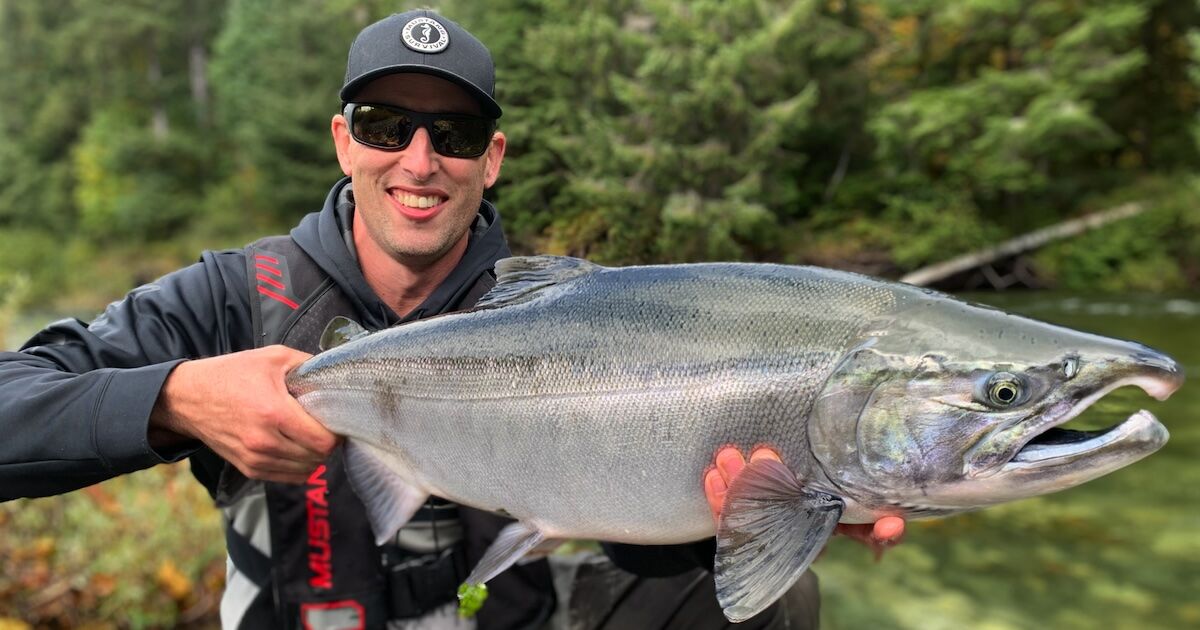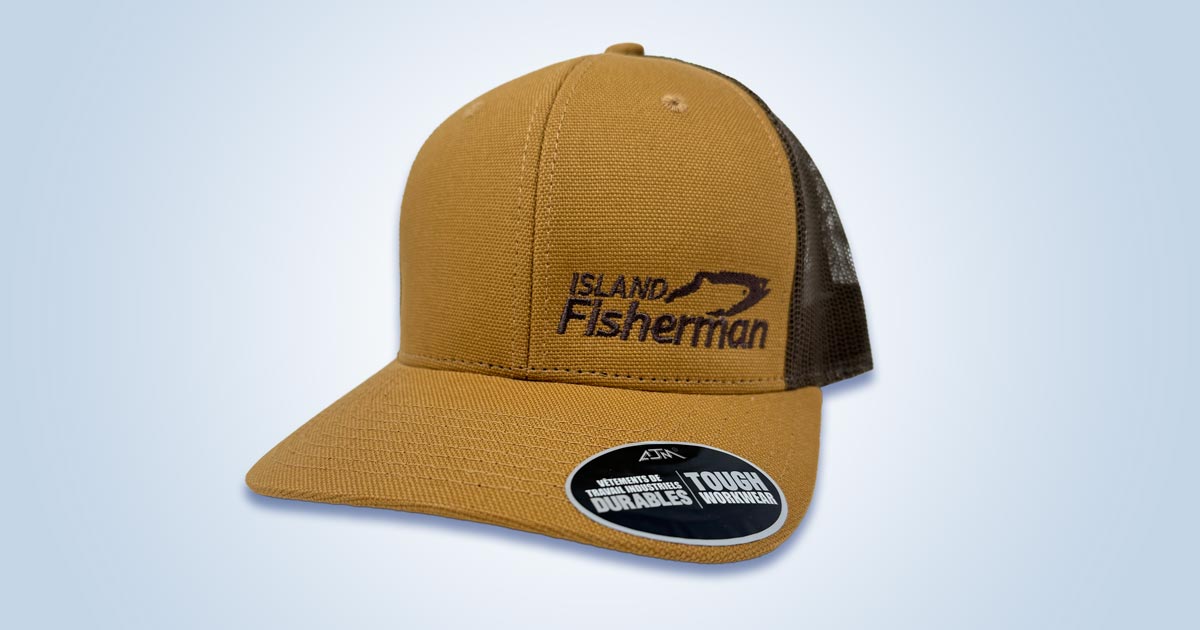
Fall is when the Vancouver Island fishing season goes into overtime, or extra innings if you prefer. It is a time of calm and quiet after the hustle of the summer ocean fishing season is over and before the big rains of October or November arrive. The island is blessed with many local salmon runs returning home to a multitude of rivers, and creeks, and to the gravel beaches at their mouths. And best of all, the opportunities to retain fish can be better than our current ocean salmon regulations allow.
Chip Benedict
Vancouver Island Pink Salmon
The first fish to arrive in early August are the pink salmon. They first appear in the northern rivers like the Quinsam, the Campbell, and the Oyster, and then in the southern areas like Nile Creek and even Departure Bay and downtown Nanaimo. While historically not favoured, these small salmon are plentiful and a great opportunity for beginning fishermen or those without a boat. They are excellent if eaten fresh or smoked and canned. In my household, we make salmon patties with them for easy dinners.
Pink salmon are easy to catch on a fly or with small casting lures. Try pink or chartreuse flies or wool and casting spoons to catch these plentiful fish. L’il Nib makes a small pink casting jig that is particularly effective. It has the correct-sized single hook that is legally required for the Nanaimo fishery.
Pink and Coho Lures – Spoons
Vancouver Island Coho Salmon
Vancouver Island River Coho
The coho arrive a bit after the pinks. In late August and into September they begin to school up near all the rivers and even small creeks along both sides of Vancouver Island. This is a particularly glorious fishery and is considered by many to be the highlight of the year.
After a long season working on fishing charter boats, my favourite fall activity was beach coho fishing in solitude. Seeing the coho take the lure, sometimes right in front of your feet, is a thrilling event. Grice Bay near Tofino was my favourite place to be when the coho were running. As the huckle and blueberries grew all around the beach, dinner was often BBQ coho with a wild berry salsa.
With the first of the fall rains, the coho would leave the bay and move into the creeks and rivers, and I would follow them there. This was the end of the fall fishing season, which often would be capped off with a dinner of bright silver coho and chanterelle mushrooms picked from the riverbank. Again, flies and casting spoons are very effective. Brass, gold, orange, and purple are generally the top colours to use. Koho spoons, Crocs, Iron Heads, soft beads, and twitching jigs will elicit strikes from coho in the river. High tide is generally best at the river mouths, but on some creeks such as the Nile River, low tide will also produce fish.
Gibbs Super Nugget Gold
This season looks like a particularly good coho year, unlike any we have seen since 1994. The coho used to spend their entire life cycle in Georgia Strait, providing local fishermen with the much-enjoyed blueback fishery. That ended in the mid-90s with the coho migrating into the open Pacific Ocean to find food and only returning in mid-summer. This year is proving to be different. The coho came back in January instead of June. They are larger and more numerous than we have seen
in several decades.
Also, due to the efforts of numerous local hatchery volunteers, there are many clipped hatchery fish. For the first time in a generation, Georgia Strait fishermen can easily take a pair of fresh silver coho per trip. These fish are the fastest growing salmon species. A 6-lb fish in July might be a 10-lb fish by the season’s end. This season should provide fishing like we haven’t seen for 30 years.
Vancouver Island River Coho
Vancouver Island Chinook Salmon
In river fishing, Chinook salmon are often overlooked when compared to the silvery coho. Chinook begin to change colour as soon as, or even before, they enter their natal waters. Their backs first turn dark green with golden sides before becoming very dark and even black. “Black boots” have always been disparaged by island fishermen used to the chrome bullets found in the salt chuck. But if targeted early in their river run, freshwater Chinook can provide excellent fights and good table fare.
Also, if a female is taken, the opportunity to harvest a large amount of delicious salmon roe is not to be missed. Despite being simple to prepare, salmon caviar is an extremely underappreciated delicacy that every fisherman should take advantage of. Don’t waste your salmon roe. Learn to process it, and you may find it is the best part of the catch. My wife can make Japanese Ikura salmon roe, which is particularly sublime, and I recommend everyone give it a try.
Remember to use at least 20-lb test line, preferably a stiff braid like SpiderWire, and a good fluorocarbon leader for these fish. Large Chinook will often turn and head downstream using the river’s current to their advantage. When they take these long runs, having strong line and a good rod is necessary to try to turn these fish. More acrobatic coho are likely to jump and fight right in front of you, so a lighter test line will work.
The best lures for Chinook are spinners rather than casting spoons. Use Red Mepps Flying C, Blue Fox, or Wicked lures in Kelly green or, best of all, try Prime Lures’ black and silver spinner.
Chinook Fishing Spinners
Also, it should be noted that with the reduced Chinook opportunities in the ocean, river fishing may be your best chance to harvest large Chinook. After all, according to DFO the reason for the restrictions on the Chinook fishery is to provide fish for orcas. But once in the river, the fish are no longer available for orcas and can be freely harvested. While I have seen seals as far upstream as the upper Kennedy River, I have yet to see any orcas following the fish to their spawning beds.
So, when ocean fishing begins to decline and the fish move into the river mouths and creeks, put away your boat and follow the fish. Beach and river fishing is also more accessible to more people, as the expenses of boats, downriggers, and electronics are not required. It can be an excellent way for people to get into fishing without much complication.
Switch your trolling rods for fly or spincasting rods and explore the lovely fall fishing opportunities that abound on Vancouver Island. You may also find it as much fun and possibly even more relaxing than ocean fishing. After all, the salmon are coming to you, so get out there and meet them.
This article appeared in Island Fisherman magazine. Never miss another issue—subscribe today!
Visit the Store
$34.99
$34.99
Featured Catch
Joel Unickow halibut (Photo: Rob Frawley Lucky Strike Sportfishing Tofino)




